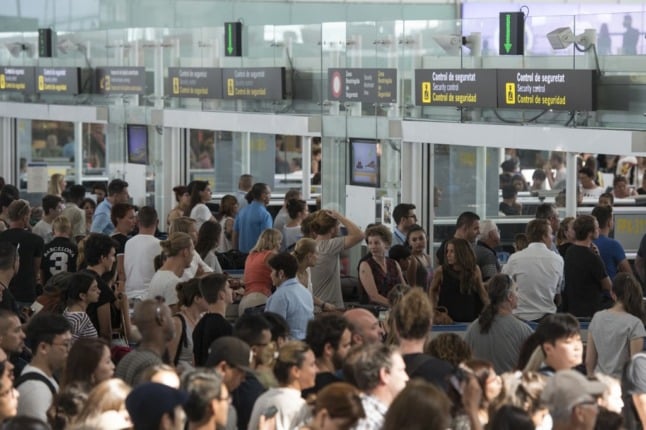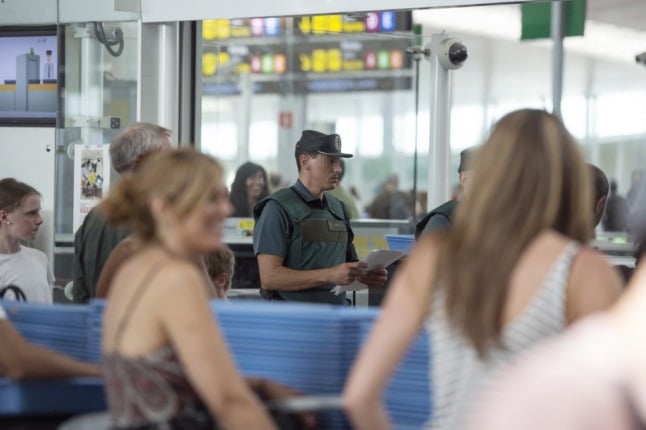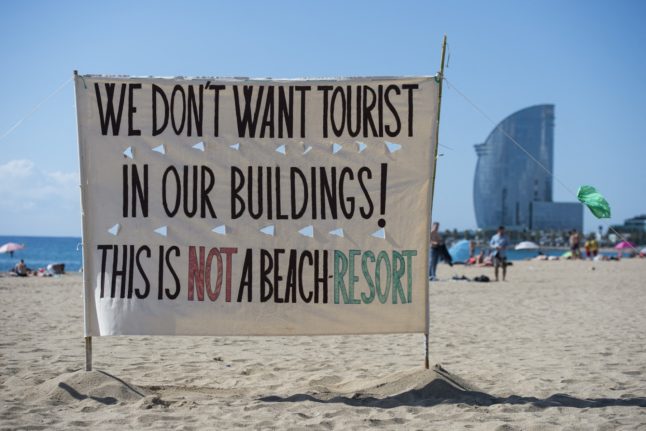How should a non-EU national who has to abide by the 90 out of 180 days Schengen Area rule prove when exactly they entered and left? And what rules apply in Spain specifically?
The Local Spain recently covered the story of a British woman who was prevented from entering Spain from Gibraltar by border officials because her passport didn’t have a stamp showing that she had indeed left Spain on a previous visit.
READ MORE: Briton denied entry to Spain over missing passport stamp
This is of particular concern for non-resident Britons who visit Spain regularly to spend time in their second homes or for an extended holiday, as Brexit means they now have to abide by EU rules on Schengen stays by non-EU nationals.
However, it’s just as important for other non-EU nationals in Spain to know how they can arm themselves with proof that they stuck to the rules.
So should I expect my passport to be stamped or scanned, or both?
According to the Spanish Interior Ministry’s page on entry requirements and justification, if border officials are satisfied with the documentation provided (visa when required, no entry ban on record etc), a “stamp” or “mark” reflecting the person’s entry into Spain will be added to the person’s passport.
That’s “unless internal laws or international treaties which Spain is part of” state otherwise, as in the case of EU nationals and foreign residents in Spain (even though as has been happening recently the passports of British residents in Spain are being erroneously stamped).
If the traveller’s ID document isn’t a passport and can’t easily be stamped, a separate form at entry or exit should be filled in.
At present there is no mention on the Spanish Interior Ministry’s website of passport scanning being the correct way to prove entry or exit out of Spain.
How is that possible if my passport has been scanned by Spanish border officials before?
It’s possible because Spain and the EU are currently overhauling the way they keep a record of foreigners’ entries in and exits out of Spanish and European borders.
The European Commission calls it the EES (Entry/Exit System), an automated IT system for registering travellers from third countries, both short-stay visa holders and visa-exempt travellers, each time they cross an EU external border.
Why the change? As the EC website states, the “EES will replace the current system of manual stamping of passports, which is time consuming, does not provide reliable data on border crossings and does not allow a systematic detection of overstayers (travellers who have exceeded the maximum duration of their authorised stay)”.
The new digital system will register the person’s name, type of the travel document, biometric data (fingerprints and captured facial images) and the date and place of entry and exit, as well as record refusals of entry, all reportedly with full respect towards fundamental rights and data protection.
Border officials in Spain and plenty of other EU countries around the world already scan passports, especially at airports and ports where there are separate controls for non-EU arrivals.
But there isn’t a system integrated across the bloc yet which would allow Member States to share this entry and exit data, hence the need for EES.
The Local Spain has contacted Spain’s Interior Ministry for further clarification, who so far have responded by saying that “Spanish national police are always working under the current legislation”, which would mean entry and exit stamps for third-country visitors.
It appears that Spanish border officials currently find themselves at a crossroads between passport stamps and passport scanning, as well as upcoming EES digital system.

So if I’m a third-country national visiting Spain, should I make sure my passport is stamped?
As things stand, third-country visitors arriving in Spain should probably expect and even request a stamp in their passports as the EES system still isn’t in place.
If you’re a non-EU visitor and you don’t get a stamp on entry or exit and don’t see your passport get scanned either, you could ask the border official about “el sello de entrada” (entry stamp) or “el sello de salida” (exit stamp).
The UK national who was denied entry into Spain recently at the border with Gibraltar told The Local her passport had “not been scanned on any occasion”, leaving border officials to decide she had overstayed on the basis of a missing exit stamp not in her passport.
The Spanish consulate in London told her another way of proving she had not overstayed in Spain was the physical boarding pass for her flight out, stating that digital plane tickets did not count, nor proof of economic transactions overseas.
Other readers have written to The Local saying their passports weren’t stamped either when exiting Spain even though they had an entry stamp, suggesting that this isn’t an isolated case.
When will Spain and the EU phase out passport stamps for non-EU visitors?
The EES, also dubbed the Smart Borders scheme, has been in the pipeline since 2016 as part of the European Agenda on Security and Migration and was initially scheduled to launch in 2020.
The Covid-19 pandemic isn’t the only reason for the holdup however, as the rescheduled launch for May 2022 depends on approval by Member States and the technical challenges of the system’s implementation.
Spain’s Interior Minister Fernando Grande-Marlaksa announced in June 2021 that Spain would launch its own digital scanning system which could be integrated into the EU-wide system, with an €11-million budget for the company that develops the software.
Spanish police and European border agency Frontex are reportedly already putting the biometric system to the test in Gibraltar.
According to online daily Nius Diario, officers have tablets which allow for facial and fingerprint recognition and the software also allows for car’s registration plates to be scanned.
This spells the end of the traditional stamps in passports for non-EU nationals at Spanish airports, ports and border controls, once the system is fully operational. It will affect those who do require a visa to travel to the Schengen Area, as well as those who don’t need a visa such as Americans and Britons but can still only spend 90 out of 180 days in Spain and Schengen.
Some may cheer for the fact that there will be less room for error, others may could the facial recognition aspect a bit too Orwellian for their liking.
According to the European Commission, the EES will contribute to prevent irregular migration and help protect the security of European citizens.
“The new system will also help bona fide third-country nationals to travel more easily while also identifying overstayers more efficiently as well as cases of document and identity fraud,” says the EC.
Border checks will also reportedly be quicker and more comfortable for these travellers.
READ ALSO: How Brits can properly plan their 90 out of 180 days in Spain and Schengen Area



 Please whitelist us to continue reading.
Please whitelist us to continue reading.
Member comments